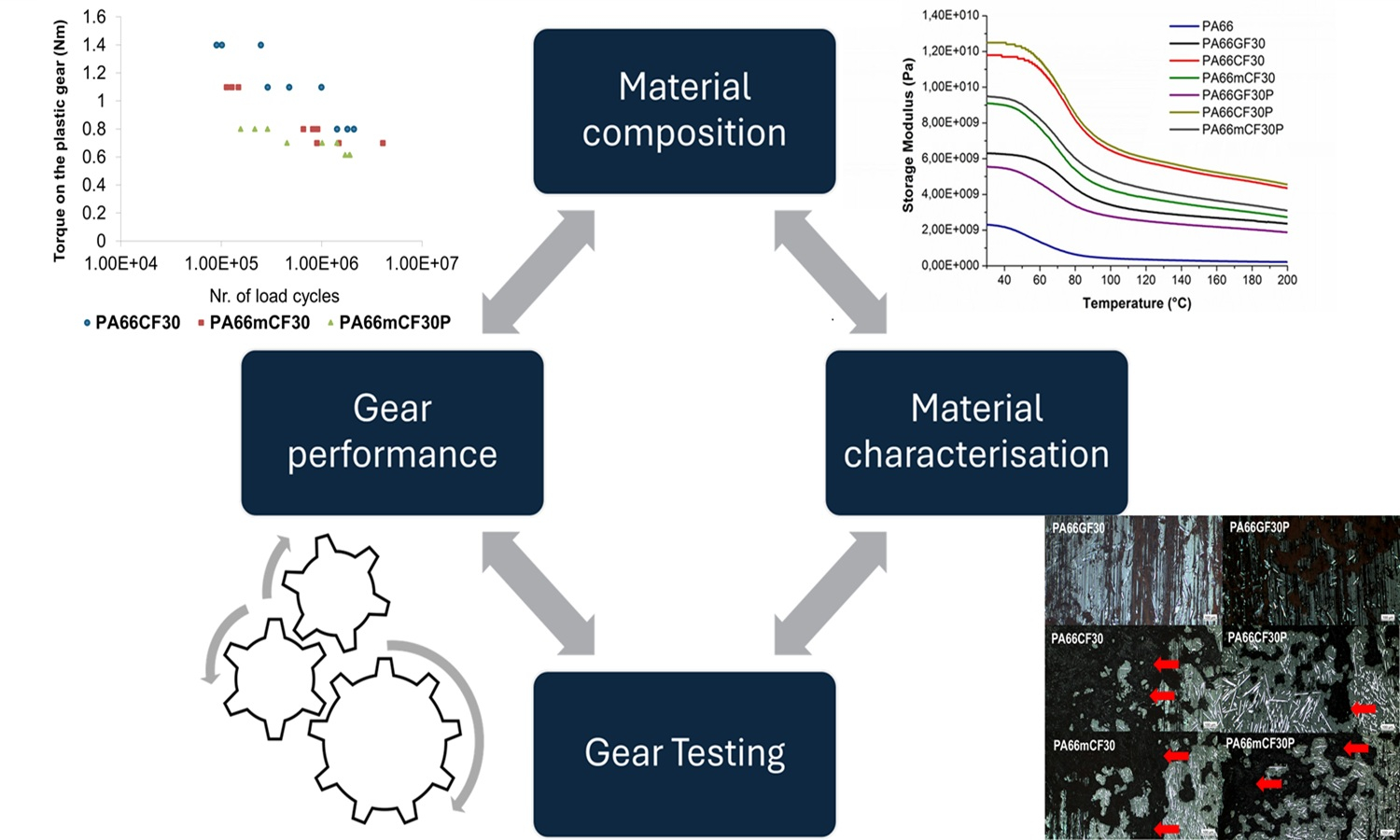Factors and processes determining the impact resistance of PP impact copolymers with multi-phase structure
Milán Ferdinánd , Michael Jerabek, Róbert Várdai
, Michael Jerabek, Róbert Várdai , Emese Pregi
, Emese Pregi , Thomas Lummerstorfer, Markus Gahleitner, Gábor Faludi, János Móczó
, Thomas Lummerstorfer, Markus Gahleitner, Gábor Faludi, János Móczó , Béla Pukánszky
, Béla Pukánszky
 , Michael Jerabek, Róbert Várdai
, Michael Jerabek, Róbert Várdai , Emese Pregi
, Emese Pregi , Thomas Lummerstorfer, Markus Gahleitner, Gábor Faludi, János Móczó
, Thomas Lummerstorfer, Markus Gahleitner, Gábor Faludi, János Móczó , Béla Pukánszky
, Béla Pukánszky
Vol. 18., No.4., Pages 406-419, 2024
DOI: 10.3144/expresspolymlett.2024.30
DOI: 10.3144/expresspolymlett.2024.30
GRAPHICAL ABSTRACT

ABSTRACT
The
impact resistance of four polypropylene impact copolymers (ICPs) with
multi-phase structures and widely differing characteristics was related to
their structure. Blends were prepared from one of them and a high-density
polyethylene (HDPE) to improve impact strength further. The structure of the
materials was characterized by microscopy and dynamic mechanical thermal
analysis. Mechanical properties were determined by tensile and impact testing,
while local deformation processes were followed by volume strain measurements.
The results obtained in the study proved that the shear-yielding of the matrix
contributes the most among local processes to the increase of impact strength,
while cavitation has a small effect on this latter property since its energy
absorption is negligible. Both increasing elastomer content and decreasing
particle size favor shear-yielding, thus improving impact strength. Considering
the importance of elastomer content and elastomer particle size, a simple but
very good model was created describing the dependence of the impact strength of
ICPs on these latter two factors by using linear regression analysis. Although
the addition of HDPE increases the fracture resistance of ICPs further, the
extent of improvement is moderate, and the approach is economically
disadvantageous.
RELATED ARTICLES
Rebeka Lorber, Janez Slapnik, Borut Černe, Andreas Hausberger, Jan Sumfleth
Vol. 19., No.10., Pages 1073-1089, 2025
DOI: 10.3144/expresspolymlett.2025.80
Vol. 19., No.10., Pages 1073-1089, 2025
DOI: 10.3144/expresspolymlett.2025.80

The study investigates the use of repurposed milled carbon fibre (mCF) as reinforcement for polyamide 66 (PA66) in gear applications, addressing environmental and cost concerns of virgin carbon fibres. Neat PA66 and PA66 composites reinforced with mCF, glass fibres (GF), and carbon fibres (CF), with and without polytetrafluoroethylene (PTFE), were injection moulded and evaluated for microstructure (fibre length), thermal, mechanical, surface, and tribological properties, as well as gear performance under VDI 2736 guidelines. CF reinforced composites showed the highest modulus and tensile strength, followed by mCF and GF. PTFE reduced modulus and strength in binary composites. All reinforced composites significantly lowered the coefficient of friction (COF) and wear rate compared to neat PA66, with mCF showing the most notable improvements. PTFE slightly improved tribological performance only for GF (wear) and CF (COF) composites. In gear testing, binary composites outperformed neat PA66, with CF performing best, followed by mCF and GF. Ternary composites had slightly lower performance than their binary equivalents. Correlation analysis showed that gear performance is closely linked to structural integrity. Failure analysis revealed higher crack susceptibility in mCF reinforced gears due to shorter fibre length. The findings highlight mCF reinforced PA66 as a sustainable, cost-effective material for durable polymer gears.



